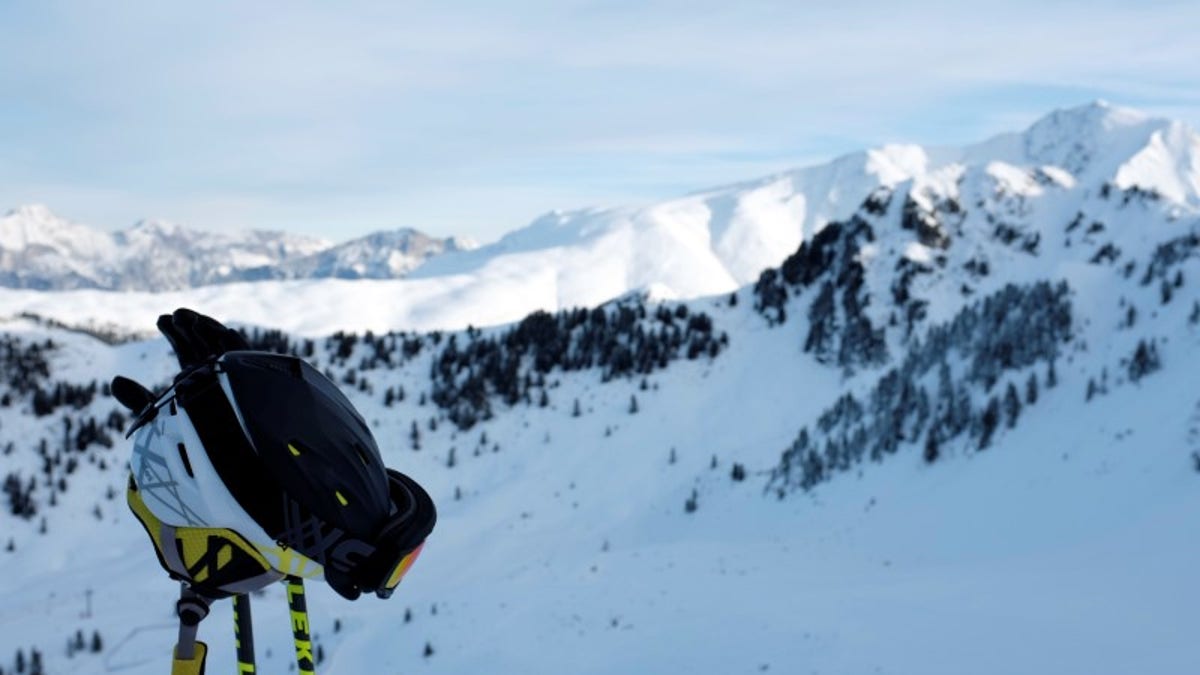
A ski helmet is pictured on the slope in the Tyrolean ski resort of Hochoetz (Copyright Reuters 2016)
Skiing helmets are not reducing head injuries as much as they used to, possibly because snow sports have become more dangerous, a Norwegian study suggests.
Helmets still offer significant protection against serious head injuries, however, and all skiers and snowboarders should be wearing them, the researchers emphasize in the British Journal of Sports Medicine.
"Skiing and snowboarding are winter sports enjoyed by several hundred million people worldwide, and they are increasingly popular. However, they also represent activities with high potential for traumatic injury," lead author Dr. Steinar Sulheim of Gjoevik Hospital said by email.
In a 2002 study, Sulheim's team found that helmets reduced head injury risk by up to 60 percent for skiers and snowboarders, and since then other studies have also found a sizeable reduction in head injuries when helmets are worn.
These results have helped to make helmet-wearing a lot more common than in 2002, so the researchers decided to follow up to see whether helmets still made a big difference a decade later.
They analyzed data on injuries at major Norwegian ski resorts for 2010 and 2011. The data, gathered by ski patrols, included whether injured people wore helmets and their level of skiing ability, from beginner to expert. It also included the location of the accident, such as ski trails or snow parks with ramps for jumps and other stunts.
Between 2002 and 2011, helmet use rose from 24 percent to 77 percent of skiers and snowboarders.
During this period 1,781 head injuries were recorded, with 925 labeled as potentially severe.
In 2002, wearing a helmet reduced head injury risk by 55 percent. In 2010, the protective effect was lower, with helmeted skiers only 21 percent less likely to suffer injuries than unhelmeted ones, and in 2011, the difference between helmeted and unhelmeted skiers was no longer significant.
Wearing a helmet did still offer more consistent protection against severe head injuries. In 2002, wearing a helmet made skiers 56 percent less likely to sustain a serious head injury. This difference dropped to 26 percent in 2010, but increased again to 33 percent in 2011.
"Using a protective helmet in alpine skiing and snowboarding reduces the risk of injuries, although the protective effect was less than expected," Sulheim told Reuters Health by email.
Skiers classified as "expert" and "good" were more 38 percent more likely to have severe head injuries than beginner and intermediate skiers, the researchers note. And the percentage of people identifying themselves as expert skiers went up between 2002 and 2011.
There are also changes in the sports themselves, the study team points out, from new types of skis "opening new possibilities for acrobatic skiing moves" to heavy development of ski park areas "with high jumps and other obstacles raising concerns about the potential . . . for severe crashes."
The study showed an increase in the proportion of the injured who were hurt in these park areas, from 8 percent in 2002 to 21 percent in 2010 and 25 percent in 2011.
"Some aspects of the sport do seem to be more dangerous today - the jumps are bigger, rails are more common, and off piste terrain is more accessible," said Dr. Kelly Bergmann, a doctor of emergency pediatric medicine with Children's Hospitals and Clinics of Minnesota in Minneapolis.
"As the limits of the sport continue to be pushed, there is likely some degree of risk involved," said Bergmann, who wasn't involved in the study.
He stressed that people should not conclude from this study that helmets don't work.
"Helmet use should still be encouraged among skiers and snowboarders, but there is still work to be done in terms of figuring out why helmets may not confer as much of a benefit as we would expect," Bergmann said by email.
"Wearing a protective helmet reduces the risk of head injuries in alpine skiing and snowboarding. It should be noted, though, that a helmet do not prevent head injuries, only reduces the injury severity," Sulheim said.
